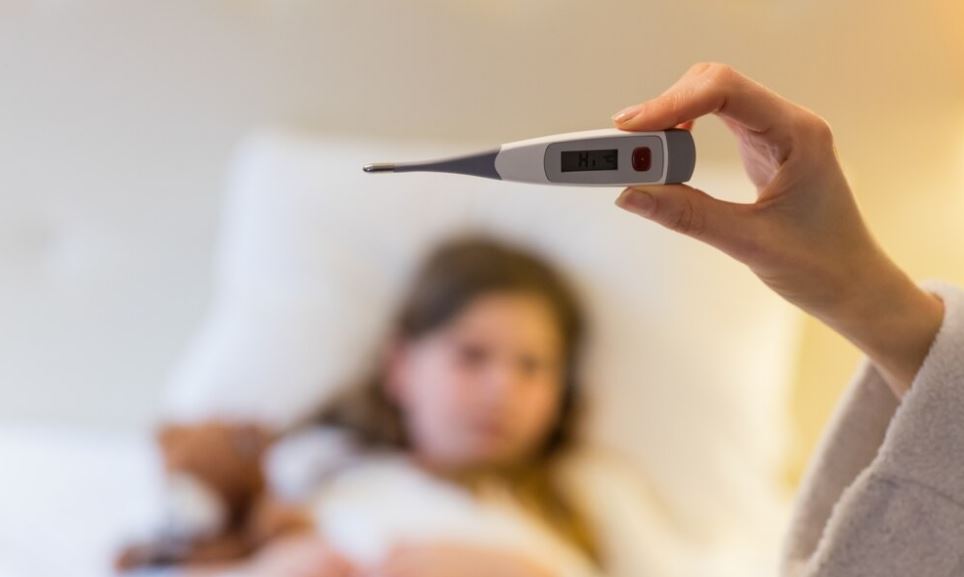
Deciphering a baby’s temperature can be akin to deciphering a foreign language for new parents, where even a small change in a number can cause both curiosity and anxiety. Knowing how a baby’s body temperature functions can help you nurture their wellbeing in a very effective way.
When measured rectally, a baby’s temperature naturally ranges between 96.8°F (36°C) and 100.3°F (37.9°C) during the course of a normal day. This range may appear limited, but it actually represents a delicate symphony composed by an immune system that is constantly changing to adapt to the rhythms of daily life and growth. It is especially helpful for preserving healthy internal processes.
Baby Temperature Range — Essential Guide Table
| Measurement Method | Normal Temperature Range | Concerning Signs |
|---|---|---|
| Rectal (Gold Standard) | 96.8°F – 100.3°F (36°C – 37.9°C) | Fever if ≥ 100.4°F (38°C) |
| Armpit (Axillary) | 97.8°F – 99°F (36.5°C – 37.2°C) | Less accurate; confirm if ≥ 99°F |
| Ear (Tympanic) | Varies, less reliable under 6 months | Use cautiously |
| Mouth (Oral) | Not recommended for babies | Wait until older age |
Why the Temperature of a Baby Isn’t a Fixed Value
Temperature readings naturally shift lower in the morning and rise gently into the evening, much like ocean tides, when considering infant physiology. Readings can be significantly impacted by things like feeding, crying, or swaddling without actually indicating illness.
Parents can more easily distinguish significant patterns from typical fluctuations by utilizing consistent measurement practices, such as taking their child’s temperature at the same time every day and using the same technique.
Knowing the Difference Between Fever and Hypothermia and When to Sound the Alarm
A rectal temperature of 100.4°F (38°C) or higher during the first few months of life should prompt prompt medical attention. An early and remarkably effective indicator of the body’s fight against infection is a fever. A rectal temperature below 95°F (35°C), on the other hand, indicates hypothermia, a serious condition that requires immediate medical attention.
Parents can confidently differentiate between minor fluctuations and urgent symptoms that require immediate attention by practicing purposeful awareness.
Selecting a Thermometer: Small Device, Large Task
Rectal thermometers continue to be the most effective option for newborns by following best practices, guaranteeing remarkably clear readings when accuracy is crucial. Although the forehead and armpit techniques are convenient, they can produce surprisingly uneven outcomes for infants younger than six months.
In addition to gaining precise insights, parents who make thoughtful decisions also strengthen their faith in the minor but crucial daily routines of providing care.
Indications That Are More Powerful Than Statistics
Only a portion of the story is revealed by temperature alone. Parents can gain a better understanding of their baby’s general health by keeping an eye out for symptoms like irregular sleep patterns, poor feeding, or changes in skin tone.
A holistic approach, which combines careful observation with numerical data, is still very successful in directing prompt, safe decisions in the field of pediatric care.
How to Comfortably Support a Baby While They Have a Fever
Experts now advise a hopeful, forward-thinking strategy centered on comfort rather than rushing to treat every mild fever. By dressing lightly, giving formula or breastmilk more often, and keeping your room cool, you can greatly increase your baby’s comfort level without overcorrecting their natural defenses.
Parents foster resilience and recovery by gently assisting the body’s process.
How Temperature Variations Occur Every Day
Research conducted over the last ten years has shown that a baby’s temperature varies throughout the day, a pattern that is initially perplexing but ultimately reflects a developing internal clock.
Caretakers can greatly enhance their ability to interpret these normal fluctuations and only intervene when genuine concerns emerge by combining patient observation with wise counsel.
When Low Body Temperature Is a Warning Sign
While fever gets most of the attention, extremely low temperatures are just as dangerous. A rectal temperature of less than 95°F (35°C) indicates hypothermia in infants, which necessitates immediate medical attention.
Parents can significantly lower these risks by practicing preventive measures like thoughtful environment control and smart layering.
The Reasons That Most Temperature Changes Are Totally Normal
Although it’s simple to interpret every warm forehead as a crisis, in the great majority of situations, minor adjustments are actually healthy adaptations rather than issues.
Parents can successfully navigate these early milestones by relying on their own intuition and well-established medical guidelines.
Data Tell, Intuition Guides
Tools like thermometers are essential in parenting, just like when navigating rough seas. However, the journey is actually led by the steady hand, the composed eye, and the resilient heart. Parents can raise children who are not only healthy but also thriving in all beautiful, dynamic senses by fusing knowledge with a loving instinct.
